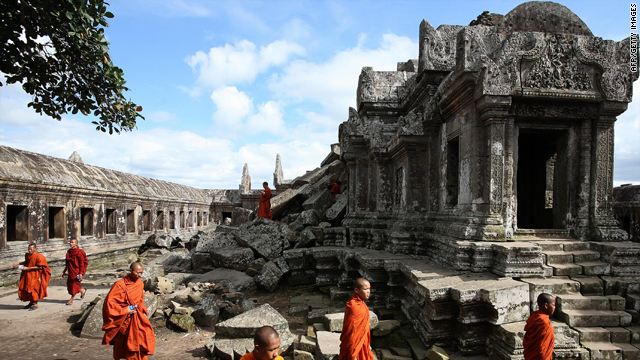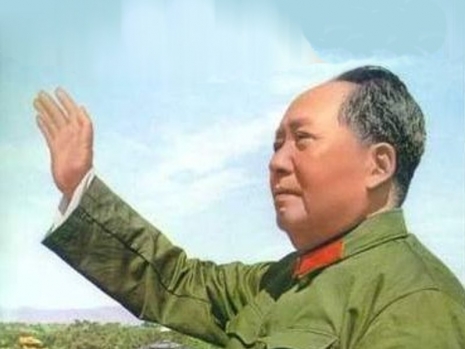Mr Panich and six other Thais were detained at Cambodia's Prey Sar prison for nearly a month.
Five of the seven, including Mr Panich, have been freed, after a Cambodian court suspended their jail terms for trespass.
The other two _ Thai Patriots Network coordinator Veera Somkhwamkid and his secretary, Ratree Pipatanapaiboon _ were given six and eight years, respectively, in jail for espionage, an outcome Mr Panich suggests could have been avoided if he had taken more care.
After being freed, Mr Panich, a Democrat MP, visited the Thais whose concerns about border incursions by Cambodian trips prompted his trip in the first place.
At the time of his visit to the border area in Sa Kaeo, Mr Panich said he honestly believed that he was on Thai soil and he was unaware that Thai and Cambodian soldiers assume a line to divide their areas of operations there.
Mr Panich went there after receiving a complaint from Bay Pulsuk, a resident of tambon Khok Sung of Ta Phraya district, Sa Kaeo, that he could not enter his own 23-rai property because it was occupied by Cambodian soldiers.
Mr Panich said he contacted Samdin Lertbutr, a member of the Santi Asoke Buddhism sect, and asked him to take him to the area.
Mr Panich represents the constituency that includes Bung Kum district, where Santi Asoke's headquarters stands.
Mr Samdin asked Mr Panich to pick him and Tainae Mungmajon up at the Santi Asoke base.
Mr Samdin said he would first take Mr Panich to Prachin Buri.
Mr Panich reported his planned trip to Prime Minister Abhisit Vejjajiva.
Mr Abhisit agreed with the trip and said Mr Panich should be there because it was an MP's duty and Mr Panich was also a member of the Thai-Cambodian Joint Boundary Commission.
When Mr Panich met Mr Samdin and Mr Tainae, Mr Samdin asked him to pick up the other Thais _ Mr Veera, Ms Ratree and Narumol Chitwaratana.
Mr Panich said he had not previously known the three and he picked them up at the Rong Klua market in Aranyaprathet district of Sa Kaeo.
Mr Samdin wanted Mr Veera to join the trip as he is knew the area. The two women were Mr Veera's aides.
When Cambodian soldiers arrested his delegation, including Kojpollathorn Chusanasevi, Mr Panich's aide, they took the Thais to a pond near their camp.
Cambodian soldiers confiscated their cameras and phones and had them wait there for hours, said Mr Panich.
Ms Ratree pulled out a small camera which had not been confiscated by the authorities and took pictures.
Ms Ratree used this camera as the Cambodian soldiers had taken their other belongings, and Thai authorities summoned there to help them were about to take the delegation back.
Mr Panich held another phone, which had also been overlooked by the Cambodians, which he used to take a picture of Mr Samdin.
Mr Panich said Ms Ratree had just happened to snap a photo at an inappropriate time, but that she only intended to do so to have a souvenir.
The delegation was taken by vehicle to Phnom Penh, a seven-hour trip.
They reached the Cambodian capital at 11pm on Dec 29, when Cambodian authorities took all their remaining belongings, including the camera in Ms Ratree's bag.
The following morning, they were taken to the Phnom Penh municipal court.
Mr Veera told the court that the small camera belonged to him but Ms Ratree told the court on a separate occasion that the camera belonged to her, as she apparently was seeking to protect Mr Veera.
The seven Thais each faced two charges of illegal immigration and illegal entry into a military compound.
By the following day, the Thais were told to put on prisoners' outfits, and Mr Veera and Ms Ratree each faced an additional charge of espionage.
Mr Panich said Cambodian authorities based the third charge against Mr Veera and Miss Ratree on the presence of the camera and the disparity in accounts about who owned it.
Mr Panich said Mr Veera had previously told him that the camera did not work.
That was why Mr Veera shouted to reporters that he had been unfairly charged, because he said he had no intention of spying.
"If Mr Veera [and Miss Ratree] had [only] faced the same charges as me, they would now be free," said Mr Panich.
"They would have been sentenced to nine months in jail, suspended.
"I sympathise with Miss Ratree. She was about to be freed along with the other five of us, but she has faith in Mr Veera and did not want to leave him," Panich said. "We signed a petition for our cases to be finalised as soon as possible but Mr Veera and Miss Ratree signed statements saying they would defend themselves on Feb 1."
The Democrat MP said that while he had told the prime minister about his trip on the day of their arrest, he had neglected to tell Thai security authorities.
Mr Veera had incorrectly assumed that Mr Panich had informed security authorities.
Mr Panich said the jail terms imposed on Mr Veera and Miss Ratree were too harsh.
"I intended to find out why a villager could not enter his own land," he said.
"I thought that if we met Cambodian soldiers at the site, we would still be able to return," Mr Panich said. "I did not expect it would turn out this way.
"Mr Veera understood that I had already spoken to authorities about the trip, clearing it advance.
"Actually I had not. I just wanted to see the villager's land," Mr Panich said.
 3:09 AM
3:09 AM
 Phratalkalot
Phratalkalot
 An announcement made by the World Health Organization on Wednesday has informed that the dreaded bird flu has resulted in the death of a girl. The deceased has been identified as a five-year old girl from the African country of Cambodia. The death is the first fatality caused by the virus, since the last fatality, which was reported in the beginning of 2010.
An announcement made by the World Health Organization on Wednesday has informed that the dreaded bird flu has resulted in the death of a girl. The deceased has been identified as a five-year old girl from the African country of Cambodia. The death is the first fatality caused by the virus, since the last fatality, which was reported in the beginning of 2010.
































